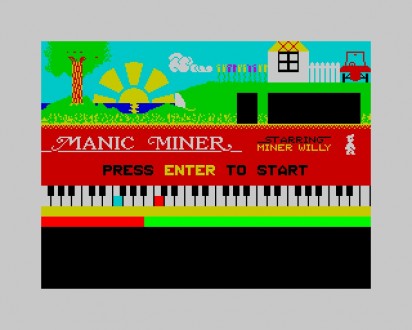
Matthew Smith, the eccentric creator of Manic Miner and Jet Set Willy for the ZX Spectrum, was ‘missing’ for years. He reappeared in the mid-2000s – and made his first public reappearance on stage at Nottingham’s Screenplay festival in February 2005, interviewed by journalist Paul Drury.
No doubt there’s a video or audio recording of this interview out there somewhere – but I can’t find one (let me know if you can). Happily, I was sitting at a Mac in Budapest (of all places) transcribing the entire interview via the live video feed. Here it is.
He still hasn’t revealed the new Spectrum game he promised here.
Paul Drury: Ladies and gentlemen, thank you very much for coming to join us, and thank you to the online audience. The videogames industry is often compared with the film industry, and maybe in money terms there is some truth in that. In terms of stars, though, the videogame world is sadly lacking.
Today, though, Screenplay and the Broadway Cinema in Nottingham, we have one of the games industry’s true stars. He had huge chart hits as a precocious teenager, he had his rock-and-roll years of excess, he had years in the wilderness, too. I’d like to think that he’s now very much on his comeback tour. Ladies and gentlemen, Mr Matthew Smith.
(applause)
Paul: Um, I’m going to ask some questions to take you through his colourful life, then there’ll be plenty of time for questions from the audience and the online audience as well. So let’s start, Matt. You wrote Manic Miner and Jet Set Willy in Liverpool, and that is still your hometown. But in fact you were born in London in 1966. Can you tell us what it was like moving up north as a child, and did the young cockney Matthew get a bit of a kicking from the Scousers?
Matthew Smith: Um… well there was an ever-present danger of it, but I changed my [indistinct – accent?] and learned to fight quickly.

Paul: Well done, Matt.
Matt: It was, um…
Paul: You survived anyway.
Matt: I went from one place to another, so it was just like…
Paul: You actually said it was just like moving to the seaside coming from the scummy part of London, to the Wirrall I believe?
Matt: Oh, yes, yes, it’s… New Brighton used to be a very nice seaside town, with a tower taller than Blackpool, and still had Europe’s largest outdoor swimming pool and its largest indoor fair when I got there. But they’re sadly…
Paul: Now, I do understand that it was probably at New Brighton that you first played Space Invaders, and you were certainly interested in computers from a early age. And you did Computer Studies at a night class, I understand. What did Santa bring you for Christmas in 1979?
Matt: This was be my TRS-80, and that’s my first and – well, the first of very many computers.
Paul: I know you can remember the price of it, but can you actually remember the smell of it?
Matt: Well, yes. It’s quite similar to new car smell, I believe.
Paul: Thank you, Matthew, for that touching insight. Now, you loved that TRS-80, and it led to you hanging around the Tandy shop in Liverpool. I presume that you did more than ’10 Print “Matt is ace”: 20 Goto 10′?
Matt: Well, yeah, there were a few of us, and Tandy were really quite accommodating to the hordes of children lurking around the shop all day playing on their machines. And we’d often pick up light work doing software for businesses who were buying machines there.
Paul: So you became like a pool of consultants?
Matt: This was how it worked. There simply weren’t consultants available anywhere else, who knew the machines like the horde of kids did.
Paul: Now tell us about that horde of kids — some other names that have gone on to work in the videogame industry. Who can you remember from back then?
Matt: Well, Chris Cannon, he did a few. Er… that particular crowd… Eugene Evans was part of the crowd […]
Paul: Eugene Evans went on to work at Imagine, is that right?
Matt: Yep. Well, there were a few people floating around, but I have to say, those of us in the Tandy shop weren’t really the largest group. There were…
Paul: There was a rival group, is that what you’re saying here?
Matt: I would say — yes, I would say the group that became Imagine was the rival group. Then there was — our first choice of publisher was Bug-Byte.
Paul: We shall come onto that. Before you get your game published by Bug-Byte, you did actually publish your first game on the TRS-80. Delta Tower One. What was that about?
Matt: It was a Galaxian game, with not too many thrills and whistles.
Paul: Did it ever get published?
Matt: Yep! There was one TRS-80 publisher in the country who kept a big catalogue, I think they must have sold about 50 copies in total, which was pretty good.
Paul: If you’ve got one of those, get it signed here today. Now, Delta Tower One, that was your first step. Now before we go onto the games that people know you far, you did actually — a little known fact — produce a game on the Vic 20 called Monster Muncher. Can you tell us the story behind that little game that you produced?
Matt: Um, well… ah! A friend of mine from the group at Tandy told me that he’d met a bloke with an interesting business idea, and so we went to see him. And this bloke said, “I’m getting into the software industry, and here’s my advert – so I’m placing these adverts in the these magzines for these four games, and they’re going in this month. Which means that in three months time, I’ll need these products to be on sale.”
(laughter)
Matt: And so, I’d like — this what he said to me and my friend — I’d like you to obtain, by fair means or foul, some programs which can be sold as products. And, for my part, I undertook to do the Monster Muncher for the Vic 20. And I had 3k RAM Expansion Pack and a tape drive and Vic 20 BASIC. It was three hours work and we’d got a product. That was probably the only one of those products that was…
Paul: The author’s own work. You say that your fellow worker didn’t spend three hours at the keyboard producing…
Matt: Well, one of them was definitely Alligata’s Defender.
Paul: Just totally ripped off?
Matt: With just the copyright message changed.
(laughter)
Matt: It didn’t really affect sales for the first few months, until… and when he got the inevitable knock at the door, the company folded, and he stayed completely out of the videogame industry for several days. And he was forced to start a new company, probably with a different [indistinct] director this time, and… the new company became surprisingly respectable eventually.
Paul: Yes, it did. Do you want to tell us what that company became? A Manchester-based company?
Matt: A Manchester-based company, with… um.
Paul: We have got lawyers, so it’s ok. We can back you up.
Matt: You have?
Paul: The Liverpool One campaign starts here. Anyway, if you do want to know what that company became, you might want to buy Matthew a drink in the bar and he will tell you. But for legal reasons he is a bit sceptical. […] Now, Bug-Byte did pick… you wrote your first perhaps more successful game, Styx, which made you £300,000. To celebrate, Bug-Byte let you keep the Spectrum that you wrote it on. You then painted it metallic green.
Matt: Uh-huh!
Paul: Would you like to tell us the significance of the metallic green?
Matt: Ummm.. none whatsoever really. It was good, though.
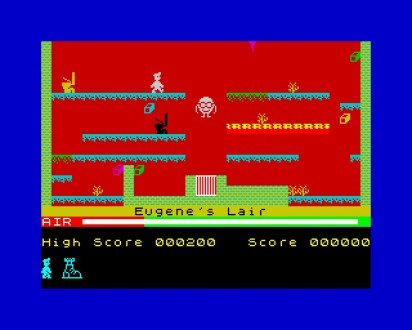
Paul: You then take a holiday in Italy, and you buy a red notebook. Can you tell us what went into that red notebook?
Matt: Ah, that would be the one which I drew… for Manic Miner, I drew all the screens. And that contains — that notebook had all the designs for Manic Miner in. And, er, I still had it for about five years.
Paul: You returned to England with that red notebook in hand, and eight weeks later we have Manic Miner. Mainly programmed at nighttime — can you tell us why you were a nighttime coder?
Matt: Well, initially because my TRS-80 — I expanded it myself with various components, and it crashed every time anyone put the kettle on. Nobody had heard of spike suppressors or uninterruptable power supplies…
Paul: You spent eight weeks, mainly at night, programming Manic Miner. Now, for those who’ve played it… some of the creatures in there are fairly surreal. We have the wobbly phones, the snapping toilets, I’d like to ask you: were there were any other substances involved in the creation of these rather imaginative creatures?
Matt: [pause] I can’t…
Paul: Right. Just checking then. Manic Miner goes on to be hugely successful – everyone should be getting rich, and you should have a long and fruitful relationship with Bug-Byte Software. That’s now quite how it happened, can you tell us your side of the very public falling out you had with Bug-Byte Software?
Matt: Well, it wasn’t particularly a falling out, I just had business plans of my own. Initially, I was going to be — we were going to start Software Projects as a publishing company, but I was going to leave Bug-Byte with Manic Miner. Because I had an agreement, they were going to publish it, and they were going to pay me. But they were a bit slow with their money, and I was young and impatient — and I was a business rival by this time of course. It was very nice to be able to publish it ourselves and keep all the money, so I took it off them. That’s… I wouldn’t say there was any massively hard feeling over that, although they were sore to lose their cash cow.
Paul: So you leave Bug-Byte to set up Software Projects with a chap called Alan Maton who worked at Bug-Byte as well. It was just going to be the two of you, with his wife as well helping out, but then a third person — the third man even — called Tommy Barton. Now you’ve said some pretty choice things about Tommy Barton. Can you tell us how he came to be involved and what your impressions were of him back then?
Matt: Well, Alan found him. Alan was looking for premises, I was writing Jet Set Willy. Alan was the [indistinct] running around. We hadn’t set up the business yet, but as soon as we found premises we were set to go. And he comes back and he says he’s found a guy — he’s got some premises, and he’s very interested in the business and wants to invest. Not be a silent partner, because he was a financial wizard apparently, this guy, and he really likes doing bookkeeping everything. And would you be interested in spreading the load and having a third man? Um… I have to say my impression was that, um… well, I didn’t really see the harm, because Software Projects, we were going to build it up, then hopefully I was going to sell on my share before I burned out completely — because that is an occupational hazard. But, er… he was a business man.
Paul: You’ve called him “a gentleman who wasn’t a gentleman”. We’ll come onto why that happened. Jet Set Willy indeed does get produced and is hugely successful, however the development certainly wasn’t smooth. It took a lot longer than expected — eight or nine months — and can you tell us about your memories of developing Jet Set Willy? And also about those elusive four lost levels?
Matt: Well, there was a lot of pressure, when you’ve had a success the pressure to follow it up is even more than there was to produce the… to succeed in the first place. And a lot of the pressure is supposed to be supportive, but it becomes actually just a nuisance. Like people waking you up because you’re sleeping too long and things like this… if you’re like having trouble finishing something, if you wake somebody up every time they’re alseep they’ll get it done quicker. It’s just like, I mean, probably anyone who’s had any success with anything has felt that kind of pressure… and some of them haven’t buckled under it. But I was buckling. But I did finish JSW almost completely.
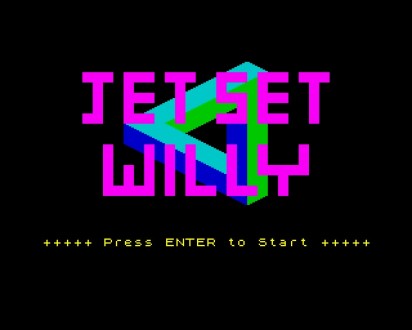
Paul: You did. There are those mysterious four lost levels. Are they in there somewhere?
Matt: Um. I would… some of them were designed but they were never working, but I could never work out why. And the reason was actually because I had my device driver from my Tandy loading on top of the last four levels in memory. And that device driver ended up on the final tape. It’s still there. If you disassemble, you can see that it’s partly copyright Tandy Corporation.
[…]
Paul: I do want to ask you, though: do you think you did anything back then to warrant the label of ‘wayward son’?
Matt: Um… [pause]
Paul: You can tell us, Matthew.
Matt: Ah… well, a simple yes, then.
Paul: Okay, we’ll move on. The atmosphere gets so bad that you and some other programmers at Software Projects actually move out to a house in Liverpool, on Holt Road. Can you tell us your memories of that?
Matt: This was right opposite Cammel Lairds [Merseyside shipbuilders] while they were going through their death throes. It was a nice rough part of Birkenhead, with regular burglaries and, er… and that’s it!
Paul: You were working on this Megatree project, which has become the stuff of legend. Can you tell us how far you got with that project?
Matt: The Megatree? Well, you’ve seen the results…
Paul: I have, Matthew..!
Matt: Well, I imagine most people here have read through Retro Gamer a few months ago, which had quite a lot of the material we did. We did an awful lot of sketches on paper, but they’ve all gone by-the-by in the company archive somewhere. If such things exist. Because I certainly haven’t managed to keep any.
Paul: That project never came to fruition. There were other projects that almost got there but not quite: Attack of the Zombie Flesh-Eating Chickens from Mars — the snappily-titled — and also Miner Willy Meets The Taxman. Which, again, may be a project you may revisit one day.
Matt: Maybe, most of designs that were done for that… most of the code was diverted into Mutant Zombie Chickens.
Paul: Now. Finally, in 1988, you decide, sod this for a game of soldiers, and you leave Software Projects. And then spend a fairly miserable seven years in Thatcher’s Britain. Until 1995, until you decided to move to Holland. Why Holland?
Matt: Um… because it’s close, essentially. It’s, er… you can get there by hitchiking to [indistinct] then basically get on the ferry. And when you’re looking for that, that’s…
Paul: And you were pretty successful getting work, can you tell us some of the jobs you had while you were out there?
Matt: For somebody who’d been on Merseyside during the ’80s, being able to knock on a factory and ask are there any jobs there and they’d say, “Yes!” — it was an unusual experience. So I worked for food-processing factories, I’ve been on production lines like laying bunches of flowers for supermarkets.
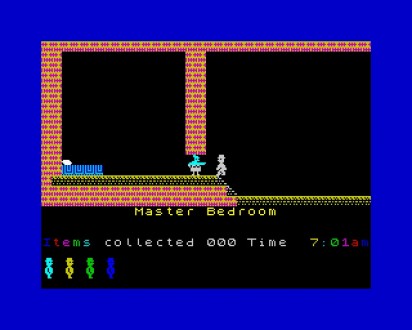
Paul: Were you in the fish industry at any point?
Matt: Nah… no. I have intended… that was a very good employer, and fish are seasonal in the North Sea. There’s a mackerel season and a herring season…
Paul: Which you can still remember, can’t you? You’re very aware of the breeding seasons of the mackerel and herring?
Matt: Well, I’m fond of eating both. There’s very little seasonal food in the supermarkets, they’ve managed to iron out seasonal produce almost entirely now.
Paul: Anyway, you managed to get work in Holland. Now you do end up having to leave Holland. Now can you just clear up why you had to leave in a hurry.
Matt: Um… well, I was put on a plane!
Paul: Do you wanna take a step back? Why were you put on a plane?
Matt: I failed to keep my residency papers in order.
Paul: There were no other charges, were there?
Matt: No.
Paul: Thank you. So we’ve cleared that one up. Just your papers. So you returned to England, only to stumble upon the ‘Where is Matthew Smith?’ phenomenon, involving speculation that you’re living in a hippy commune, or that you’re — interestingly — dead. What are your memories of that time? Was that rather a strange time?
Matt: What, when I came back and I found the internet? Well, it was unusual being able to, ah… well, it was actually a very pleasant feeling that I wasn’t quite as forgotten as I considered myself to be. And, er… but mostly I was just glad to have the internet, and the ability to communicate. It was just about being able to tell everyone that I’m not missing, I never have been missing. I had my email address — unfortunately, I’ve lost my Freeserve account now because I didn’t have a telephone line — but I had my email address on every page on my site. Until last year I had to pick out real emails from the spam, I was on the verge of abandoning that account anyway. I’ve got all of the aggro.
Paul: Anyway. You managed to get a job at Ringcraft, and produce Scrabble for the Game Boy Color. Unfortunately, Ringcraft then folded the following year, and that was absolutely nothing to do with you. Let’s make that clear.
Matt: Um, yes, yes. Yes.
Paul: Good, good, good. Now I just wanna ask you — you have got other projects in the pipeline — do you think it’s still possible to be a lone bedroom coder like back in the day?
Matt: Well, yes, course, it’s possible. The question is whether you can ever make a living working by yourself. And, obviously, you still can. Because there are some shareware authors, like iD Software, for instance… I suspect they had a little bit of investment to keep the scene together. But…
Paul: Would you give any advice to someone starting out in the game industry? What would your advice be to them?
Matt: Um…. write a best-selling game. There isn’t much more to it than that!
(laughter)
Matt: Write the very, very, very best game that anyone has ever seen — and you’ll probably get a job.
Paul: While we’re on the subject of advice, and I have asked you this before I know, but: I want to know, would you have any advice from Matthew sitting here now in his mid-30s to the young Matthew just setting out? Any advice you’d like to give your young self?
Matt: Um… I would say absolutely buy a house NOW. Yeah.
(laughter)
Matt: Well, it’s not all that funny, because obviously it’s — for people who haven’t got a house, it’s very obvious that everybody who hasn’t got property in this country is a third-class citizen, and is likely to die one. That’s the unfortunate fact of the matter. And, um… and… it was quite obvious even back in the ’80s, and the advice me mum gave me … the first chance you get, absolutely first chance you get, buy yourself a house. And at least you’ve got…
Paul: That’s a pity, because the £30,000 you got from your first royalty cheque from Manic Miner, that didn’t go on a house, did it?
Matt: It didn’t, it didn’t. By the time I actually received my big royalty cheque, I was already owed much more from Software Projects, and so I thought I could spend the money, the cash I had in my pocket. And I jolly well did. [indistinct]
Paul: One final thing, I do want to clear one thing up before we open it up to the audience. Matthew Smith: are you, or have you ever been, a goth?
Matt: I was… I was slightly flirting with it maybe at the St Luke’s 14-17 discotheque… but… hmm.
Paul: You’ve not been it since?
Matt: No, no, I think — no…
Paul: Do you own any Sisters of Mercy records?
Matt: I do not, no.
Paul: I’m glad we’ve cleared that up.
Matt: No, let me tell you — this was Stuart who started this rumour that I was a goth.
Paul: We all thought you were a goth. You wore that shapeless black jumper and the hair like this. You were more than flirting with goth, weren’t you?
Matt: Umm…
Paul: It’s okay…
Matt: [indistinct] it was all New Romantic, back then they were still wearing [indistinct] clothing at the time.
AUDIENCE QUESTIONS
Q: Those four extra Jet Set Willy rooms — where would they have gone?
Matt: They would have gone — they were around the Megatree. Up the top, there was more stuff up the top of the Megatree. That was — and possibly out by the boat. I sort of — you couldn’t bring up a map [on the video screen behind Matt] could you? Well… I threw these rooms together just to…
[screen now plays final part of Jet Set Willy]
Paul: It’s the end of Jet Set Willy! It doesn’t crash!
Matt: Doesn’t it?
(laughter)
Matt: Do you know, I don’t think I’ve seen this sequence since I wrote it.
Paul: Well, we never saw that, because there was a bug so you couldn’t do it.
Matt: No, no, no, I’ve never finished Jet Set Willy.
Q: [indistinct – along the lines of, what was your favourite modern game?]
Matt: Well, luckily, I have played — ah, what’s it called? Road Rash. Yes. It’s very nearly the only PlayStation game I’ve ever played, but fortunately — I know it’s my favourite already.
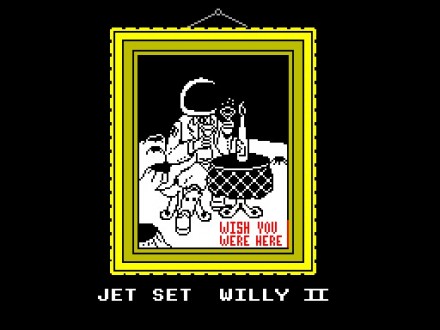
Q: What was the deal with Jet Set Willy 2?
Matt: Um… that was mostly Derrick Rowson’s work. Who, eventually… not too long after writing it went to Odin or Thor or Denton Designs — they were a group of companies in Canning Place, which was the place where [indistinct] Maggie May in the old song, before she gets sent to Botany Bay. The Beatles… on the White Album, isn’t it? Anyway. Canning Place. That’s where everyone was except us, essentially, and Imagine — I think even Imagine…. no, no, they were never there. Derrick Rowson, and I think Steve Wetherall gave him a lot of help with that.
Q: [indistinct – was it a financial…]
Matt: Uh, well, I was the publisher — so in theory, I was getting most of it, but in practice that was dissipated with the money from Jet Set Willy 1. I never saw anything for any of them.
Q: Was the [Jet Set Willy] mansion design intended to look like a ship, as that’s what the map looked like?
Matt: The mansion itself? Mmm… it might be, I think I might have been slightly influenced by the Frank Lloyd-Wright school of architecture. And… possibly, I think it just spawned naturally. I put [indistinct] on it in pretty much same way as a traditional English country house.
Q: Which game did you most enjoy making?
Matt: I would say definitely Manic Miner. Yeah. That’s an easy question, because… rather than Jet Set Willy, which was hell. Seven shades of hell.
Q: [indistinct]
Matt: Um, I have a strong preference for games that aren’t violent. I don’t see the harm in a little violence sometimes, as long as it isn’t all the time. It can definitely have a bad effect. Everybody plays — everybody says they’re totally harmless, and that only deranged people can ever be affected by them. And I don’t think that’s altogether true. But I agree that videogames can be a pernicious influence.
Q: [indistinct – probably who should play Willy in a movie version]
(laughter)
Matt: Um… well! I dunno, I suppose somebody from, um…
Paul: You can write that on a postcard.
Matt: Everyone in the Full Monty… actually they were steel workers not miners. Robert Carlyle is too skinny. Well, you need somebody — Bob Hoskens did Mario, didn’t he, or was that Danny DeVito? Mmm… I think David Jason is getting on a bit to do them difficult jumps on the collapsing floor.
Q: Are you going to make any more games… [indistinct]
Matt: Um, yeah – I know what this is. They wanted me to write a new Spectrum game, regardless of the…
Q: [indistinct]
Matt: Yep. Yep, I have actually done a lot of the artwork, and I’ve even started coding the engine for a new Spectrum game.
Paul: Can you tell us a little more? Can you give us an exclusive?
Matt: Um…
Paul: Will Willy be in it?
Matt: Let’s see. Er, I have actually made an agreement over the licensing of the characters in some handheld games now. And this is why I didn’t have to hitch my way down here. And so I’m happy with the new deal, and that lets me carry on working. But I won’t be, um… they won’t be starring Miner Willy except by agreement with the new publishers.
Q: Clever ways to fit so much into such a small amount of memory on the Spectrum.
Matt: No, 16k was the small one! 48k was the big one. It’s… by the standards of the day, compared to the 4k machines. Compared to Monster Muncher fitting Pac-Man into an unexpanded Vic 20, 48k was a luxury.
Q: Where did you get the inspiration to do Manic Miner?
Matt: I was in the arcades, I was playing Donkey Kong, I wanted to play Donkey Kong, so I put a bit of Donkey Kong in it. Various other games in the arcade, and they were 10p a go, and 10p was a lot of money in those days. I mean, you could buy three Mars Bars for 10p. If you shopped around, of course.
(laughter)
Paul: You were a big fan of Bill Hogue’s work, weren’t you?
Matt: William Hogan III Jr, in California. And — yes, he wrote all the good games that were available on the TRS-80. Then he wrote a game on the Atari 800. Which was, er – excuse me, which was very much the inspiration for Manic Miner.
Q: What’s the secret of a good game?
Matt: Erm… it has to… the secret of a good game is it has to make you want to play it, and keep playing it. It just has to avoid — the first five minutes sometimes — it has to avoid annoying you so much that you don’t want to play it again. And… er, a really good game that’s fun to play, even if you’re not very good at it. And also it must carry on being fun to play when you are very good at it. Some games fall down. Like Naughts & Crosses for instance — it’s great until you realise how terrible a game it is, and it’s not so good any more. There are videogames that are quite similar. Like, for instance, Tetris — if they hadn’t made the highest difficult level, if the top level had been too easy — if too many people reached a plateau where you just play it endlessly, then it would have been rejected as just… along with all the similar games that weren’t quite Tetris that were contemporary.
Q: Did Matthew get any money for new versions?
Matt: Well, yes. The Vodafone version published by Advance Mobile Solutions. Lovely people! Although, actually — now you mention it — I’ve seen that they were actually out selling Manic Miner before they contacted me. So.
Paul: So you’ve been onto them, it’s been resolved?
Matt: It will be.
Q: [indistinct]
Matt: Um… I can’t see an immediate need to… no, I think that one’s been covered quite thoroughly. I think I had delusions of being John Belushi at the time. Animal House was a very funny film. I still have to rate Animal house as one of my favourite films of all time, mostly because of John Belushi.
Q: What got you into making games in the first place?
Matt: Um… the initial urge was to play Space Invaders at home. And, Space Invaders was… you could get Pong on home machines, but there were no — this was before Atari 2600, the VCS, the Video Computer System. They eventually had a very crude Space Invaders available. But there was nothing when I started, and I had the urge to make it appear on the television in my mum’s living room. And play it for less than 10p. Because 10p was a lot of money in those days!
Q: [indistinct]
Matt: I’ve got three good ones on the go right now. I’ve got, er… [puts hands over mouth and makes roaring noises] I’ve either got to talk sensibly or I’ve got to carry on doing this… Yeah, I’ve got the… the Spectrum one is progressing. I’m putting the material together, so there will be a new Spectrum game eventually. And…
Paul: Has it got a working title, Matthew, or..?
Matt: No. Um… well if you want a working title, call it Miner Willy Meets The Taxman. I’ve actually used that one before, because Mutant Zombie Chickens was under the cover of… it was genuinely a working title at the time. And I could tell you the final name, I think it’s, er — what is it? [thinks] [call from audience] That’s it, that’s the one…
Paul: What are the other two projects you’ve got going on?
Matt: I’m doing the 3D game as well. And another 3D game. And they’re not for Spectrum. Probably. Um… I say probably, everyone laughs but of course Elite was very popular on the Spectrum. The first really successful 3D game. And… er, my 3D games are probably not going to be on the Spectrum. Not on an unexpanded Spectrum.
Paul: 48k at least, yes.
Matt: Yes… the games companies today think nothing of bringing out a game and saying here’s a great game: but it won’t run on your computer, you have to go buy a new graphics card for it.
Paul: I take it you’re not playing Half-Life 2 on your PC at the moment, then?
Matt: Oh… yeah! I’ve played it!
Paul: Well done!
Matt: I’ve celebrated my brother giving me his second-best GeForce by going out [indistinct]… he’s got the Half-Life 2 so he’s playing it on his 6800.
Paul: [gestures to The Warehouse level on Manic Miner playing on video screen behind them] I don’t think you can complete this level. And I don’t think you could ever complete this level, even when you released the game.
Matt: The Warehouse! No, I did do it once. The Warehouse. Yes, that’s the way you do it. That over there… yep… I’d have gone back again, I’d have dropped down.
Paul: Director’s walkthough here. I can’t do this screen. But the point is you released this without actually having completed it, isn’t that the point?
Matt: No, no, no, no… it wasn’t released… it was [indistinct] duplicated, and the distributors might have had them. And it was definitely on its way to being released, and nobody had actually done this. But I was fairly sure… I knew the route, I’d seen a couple of routes, there were some levels like this that were one route — it’s just an obvious, straight path. And all the levels on Manic Miner, all the routes were meticulously worked out.
Paul: Did you do a lot of playtesting before it came out?
Matt: But not actually Quality Assurance, which is apparently what it’s called. And they actually test the product before they go on sale.
Paul: Radical idea, yes.
Matt: Well, yes. Yes, it is. Certainly, yeah. Certainly wasn’t any part of the industry in the ’80s, I have to admit.
Paul: Why do you think people are still playing this 20 years later? Is it because it’s a fantastic game, or is there a bit of nostalgia in there?
Matt: Um… it’s a nicely-done game. You have to, um… I think it’s well-rounded. I think this is — and it fits the machine. These are still things that, um… I think I paid good attention to detail, Manic Miner especially. There’s very little in it that isn’t meant to be there. And I’m not sure how many products turn out that way these days.
Paul: Jet Set Willy wasn’t the same, was it?
Matt: No, no, no. That was my first experience of management drag. Where people alleged– supposedly facilitating the development process do very little except make spurious decisions that screw the whole job up… it’s common conception that managing games development teams is a very difficult job, whereas it’s probably fairer to say that it’s a totally impossible job and that nobody should be foolish enough to attempt it.
Paul: And on that note, we’re on the last screen of Manic Miner, it’s 3 o’clock — talk about perfect timing, a bit like one of Matthew’s games — can I just thank you so much for joining us, an online audience as well, an audience here at Screenplay in Nottingham: Mr Matthew Smith, thank you so much.
[applause]
Paul: Right, the session after this is an excellent one, but I don’t know about you, I’m just going to watch [Manic Miner] finish. But thank you very much for joining us.
Matt: Ah — the finish! Oh, yeah, the Omega is flashing away. Feel the sunlight hitting the soil…
Paul: This is where your Spectrum crashes, just there.
Matt: And he comes up in his own back garden! It’s convenient, isn’t it? The fish and the dagger, that was actually the proof that you’d finished.
Paul: Thank you everyone. Cheers.
[applause]
Thanks to Gaz and Sack for help filling in the gaps

Latest Comments